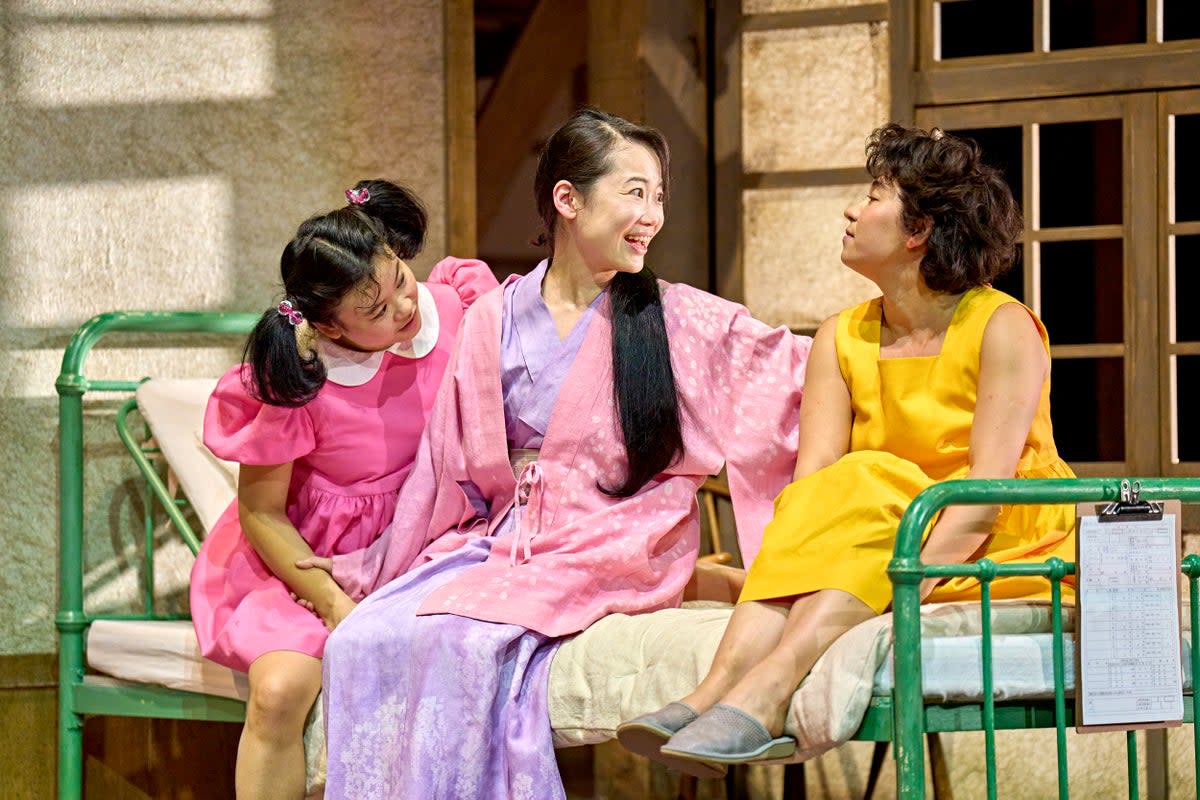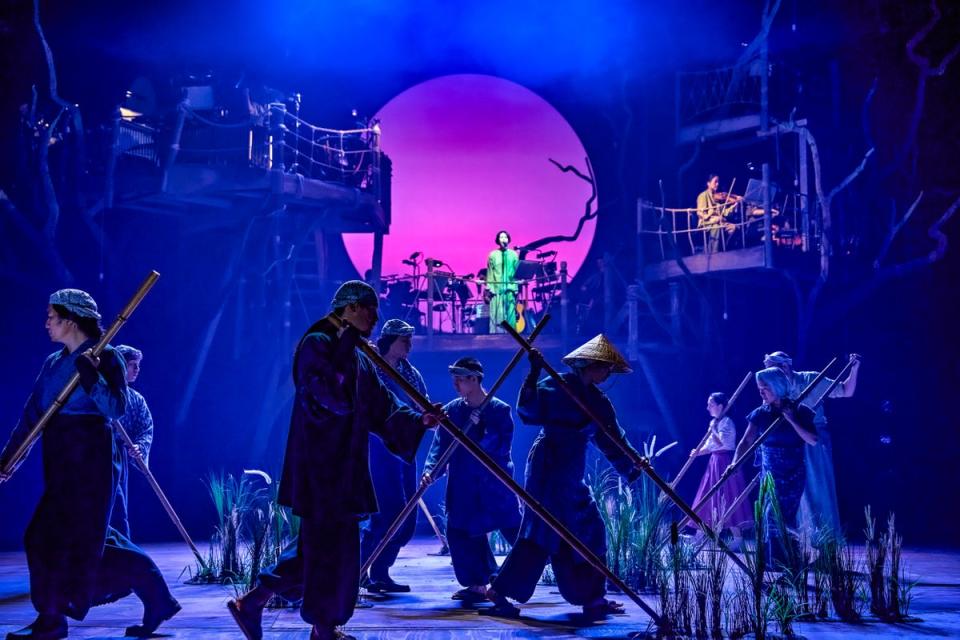My Neighbour Totoro at the Barbican review: it’s easier to admire this Studio Ghibli adaptation than love it

This blockbuster family show from the Royal Shakespeare Company is full of dazzling visual magic but short on plot, just like the Studio Ghibli animation classic it’s based on. Two young Tokyo sisters, relocated by their dad to rural Japan in 1955 while their mother is sick, enter a fantasy realm dominated by Totoro, a giant, furry animal spirit with a benign, molar-baring roar and a tongue the size of a pink duvet. They get sad, they cheer up, that’s it.
The blimp-like Totoro, his rabbity minions and the enormous 12-legged cat bus that transports people across the sky in its abdomen are powerfully realised through giant puppetry and inflatables in Phelim McDermott’s production. But like the delicate, half-whimsical, half-creepy visuals of Hayao Miyazaki’s 1988 film, this adaptation is easier to admire than to love. Never mind: the Barbican apparently took a bigger advance for this than for Benedict Cumberbatch’s 2015 Hamlet.
Fronting a huge stage ensemble, all apparently of south-east Asian origin, Ami Okumura Jones plays sensible Satsuki, 10, with Mei Mac as her impulsive younger sibling Mei, four. The tropes of child acting are thoroughly overworked as they hare around the stage, screaming in laughter or terror, or rocking from foot to foot. Local boy Kanta (Nino Furuhata) is a parody of awkwardness while the adults are sketchy, warm figures.
No wonder the girls prefer a fantasy friend who’s a pop-eyed, grinning mixture of all-powerful and permanently bemused. The Totoro is a weird, oversized mix of bear, cat, rabbit and owl. It can fly but moves and gurgles ponderously. It can make vegetation sprout at will but seems mystified by rain. It has become a pop-culture icon, mystic and cuddly, since 1988 but surely embodies a child’s idea of escape from maturity, loss and death.

In fact, the story could use more jeopardy, more darkness and more of the monsters. The stage adaptation has been guided by the film’s composer, Joe Hisaishi, whose score here sounds sing-song and inoffensive, and includes lyrics sung in Japanese and English by Ai Ninomiya. Mei’s disappearance is accompanied by a song called Where Has She Gone?. Adapter Tom Morton-Smith loyally transposes the off-key weirdness of the original and also its deeply conventional take on childhood.
We’re left with atmosphere, which McDermott and his team provide in spades. Veiled and black garbed performers conjure up forests, cornfields, and an airborne view of Tokyo as well as the wondrous beasts (the huge, inflated cat even has testicles: sorry, but once seen you can’t notice anything else). Floppy chickens and urchin-like “soot sprites” scamper over the pale wooden set.
The puppetry troupe constantly expose the workings of the illusions in a way that makes them all the more charming. Production designer Tom Pye and puppetry boss Basil Twist play wittily with perspective and switch between 2D and 3D in repeated nods to the film.
The big question – as it was when the National Theatre reopened in 2021 with an adaptation of the Japanese film After Life – is why? If our two great subsidised companies are going to take narratives from another medium and context there has to be a reason beyond mere piggybacking.
Here, the RSC is clearly hoping for another commercial success to match the Tim Minchin/Dennis Kelly adaptation of Matilda. For all the ravishing imagery and the collective endeavour involved, this show isn’t quirky or adult-friendly enough for that.
Barbican Theatre; rsc.org.uk/my-neighbour-totoro

 Yahoo Movies
Yahoo Movies 
